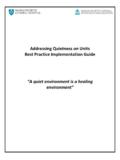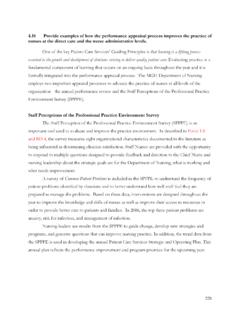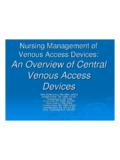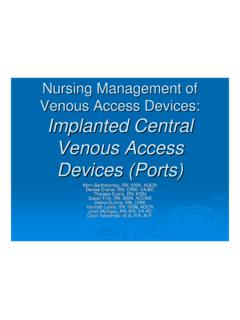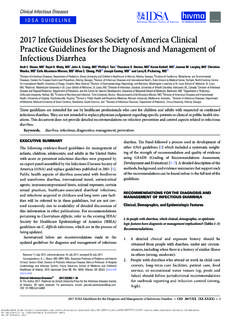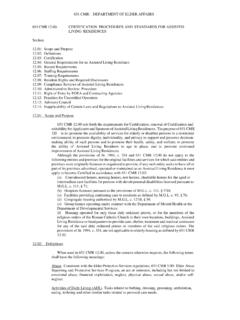Transcription of Excellence Every Day - Massachusetts General …
1 Excellence Every Day At Massachusetts General Hospital, Excellence Every Day means striving to provide the best possible care to Every patient and family in Every moment of Every day. It is our philosophy and our commitment. Our efforts to achieve Excellence Every Day include validation by external regulatory agencies in the form of on-site surveys and through our designation as a Magnet hospital. We are all focused upon meeting the needs of patients and creating systems that support the highest level of quality and safety. During 2012, Massachusetts General Hospital is scheduled to have two surveys by regulatory agencies: The Department of Public Health Infection Control Survey, and The Joint Commission Hospital Survey. Provided our Magnet evidence is approved in late 2012, we anticipate there will be a site visit in 2013 by Magnet appraisers as part of our journey toward redesignation as a Magnet hospital.
2 Based upon your feedback about the most helpful process for preparing to host regulators, this Resource Guide has been developed for your learning. We hope that it supports your commitment to Excellence Every Day for all our patients and families, those already here and those still to come. This first section of the resource guide is designed to help you feel ready for the regulatory surveys. For more information about the Magnet Redesignation, close the guide, flip it over, and you'll find what you are looking for! 1. 2012 Joint Commission National Patient Safety Goals Goal 1: Improve the accuracy of patient identification. Use at least two patient identifiers when providing care, treatment and services. Eliminate transfusion errors related to patient misidentification. Goal 2: Improve the effectiveness of communication among caregivers. Report critical results of tests and diagnostic procedures on a timely basis.
3 Goal 3: Improve the safety of using medications. Label all medications, medication containers, or other solutions on and off the sterile field in perioperative and other procedural settings. Reduce the likelihood of patient harm associated with use of anticoagulant therapy. Maintain and communicate accurate patient medication information. Goal 7: Reduce the risk of health care associated infections. Implement evidence-based practices to prevent x Health care associated infections due to multiple drug-resistant organisms in acute care hospitals x Central line-associated bloodstream infections x Surgical site infections x Indwelling catheter-associated urinary tract infections Goal 15: The organization identifies safety risks inherent it its patient population Identify individuals at risk for suicide. Universal Protocol Conduct a pre-procedure verification process Mark the procedure site Perform time out 2.
4 Massachusetts General Hospital Performance Improvement Projects for 2012. Medication reconciliation: Maintaining and communicating accurate information about a patient's medications Universal protocol: Ensuring the correct patient, correct procedure, and correct site for all invasive procedures Reducing healthcare associated infections through excellent hand hygiene and use of personal protective equipment Care Redesign and Innovation Units: Achieving improved efficiencies and effectiveness by rethinking the processes of care delivery Regulatory Surveys When will the regulatory surveys occur? Regulatory surveys are unannounced; however, there are windows of time within which the surveys will likely occur: x Department of Public Health (DPH) Infection Control Survey: anytime during 2012. x Joint Commission (JC) Hospital Survey: Now through August 31, 2012. Department of Public Health Infection Control Survey What will the DPH Infection Control Survey be like?
5 This survey, which DPH initiated in 2010, is specific to infection control and prevention. Two surveyors will be at MGH for 5 or more days. The surveyors will be accompanied by a staff member from the Infection Control Unit. They will visit as many practice sites as possible; they will especially focus on high-risk areas such as procedural sites, ICU's, emergency department, and dialysis. Surveyors will assess our compliance with infection control standards by observing practice, inspecting the environment, reviewing records and documentation, and interviewing staff. 3. What will the DPH surveyor look at? x Food and drink limited to designated areas only x Hand hygiene and Standard Precautions x Transmission-based precautions (Contact, Contact Plus, Airborne Droplet etc.). x Aseptic technique x Precaution gowns tied minimally at the neck. x Gloves pulled over cuff of gown x Gloves and gowns removed before leaving the room x Needle boxes present and not overfilled x Equipment cleaned and disinfected between patients with hospital- approved disinfectant x Clean equipment identified and properly stored What will the DPH surveyor look at?
6 (continued). x High-touch surfaces in patient rooms cleaned daily x Checklist completed during central venous and pulmonary artery catheter insertion x Patient and family education documented ( hand hygiene, prevention of surgical site and central line infections, isolation precautions). x Refrigerator temperatures checked and documented x No expired supplies, no external shipping boxes; no supplies on floor, windowsill or underneath sinks x Clean supplies/linen on covered cart or in cabinet/container or clean supply room x Clean and soiled utility rooms doors closed x Sterile water and sterile saline labeled when opened and replaced Every 24 hours 4. What types of questions will the Infection Control surveyor ask? Health Care Associated Infections Q What are the most common ways you prevent transmission of infections from one patient to the next? A Hand hygiene before and after contact with the patient and the patient's environment (NPSG) and early identification of patients requiring isolation and timely placement on appropriate precautions.
7 Q How do you know if one of your patients has MRSA, VRE, C- difficile or an MDRO? (NPSG). A There are several ways that I find out: x I review laboratory reports; Infection Control or Microbiology laboratory notifies the nursing unit; physicians also inform us. x Patients identified at MGH by Infection Control are flagged in CAS with a red P in the corner of the screen. Caregivers can click on the P and it opens a window with information on the organism and precautions required. x When patients are transferred from another hospital, I read the history. Q What precautions do you use for patients with MRSA or VRE? (NPSG). A Patients with known or suspected MRSA or VRE are placed on Contact Precautions. x They're placed in a private room or a semi-private room with another patient infected or colonized with MRSA or VRE. x Gloves are worn on entry into the room; gowns are worn when there is contact with the patient, surfaces, and equipment.
8 X Equipment is dedicated to the patient if possible. If equipment is shared it is cleaned and disinfected with hospital-approved disinfectant (Virex or Super Sani Cloth). 5. Q What precautions do you use with patients who have C-diff? (NPSG). A Patients with known or suspected C. diff are placed on Contact Precautions PLUS. This is similar to contact precautions with two primary differences. After contact with the patients, hands must be washed with soap and water first then disinfected with Cal Stat. Patient rooms and equipment are cleaned daily with bleach-based disinfectant. Q Describe the procedure for donning precaution gown and gloves. A Perform hand hygiene, place the gown over the shoulders, tie the next strings so that the gown overlaps, then tie the waist strings so that the gown ends overlap, put on the gloves, pulling them up to cover the cuffs of the gown. Q If a patient on precautions is leaving the unit to go to x-ray, how does the transporter know the patient is on precautions?
9 How does radiology know? (NPSG). A The transporter is informed by the sign on the door or by talking with the nurse. The nurse also writes the type of precautions on the Sticker to Ride which is placed on the front of the patient record. Q What training have you received regarding infection control and what does it include? (NPSG). A I've received training about General infection control practices such as hand hygiene, blood borne pathogens and tuberculosis guidelines; and other MGH practices to prevent healthcare-associated infections such as MRSA, VRE, C-diff, central-line associated blood stream infections and surgical site infections. Q When did you receive this training? (NPSG). A During orientation; it is repeated each year as part of required annual training. 6. Q Describe the steps that are taken to prevent infection when inserting a central line. (NPSG). A We do the following: x Perform hand hygiene prior to catheter insertion x A qualified individual monitors the insertion for breaks in sterile technique and completes the Central Line Infection Prevention Checklist.
10 X Use a standardized kit and protocol x Educate patients and families about prevention of infection . Q Describes steps that are taken to prevent surgical site infections. (NPSG). A x Use aseptic technique during invasive procedures; this includes use of sterile equipment, skin preparation, and managing the environment. x Use aseptic technique during dressing changes and closely monitor wounds x Educate patients and families about ways to prevent surgical site infections. Q Describe a few ways you prevent urinary tract infections. A We limit the use of urinary catheters and remove them as soon as possible. We insert using sterile technique and equipment, clean the catheter per procedure, do not disconnect the catheter from the drainage tube unless necessary to irrigate; avoid irrigations, obtain specimens through the specimen port; avoid kinking of the tube, keep the urine bag lower than the bladder and off the floor.
